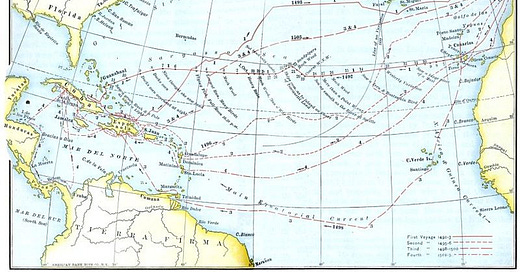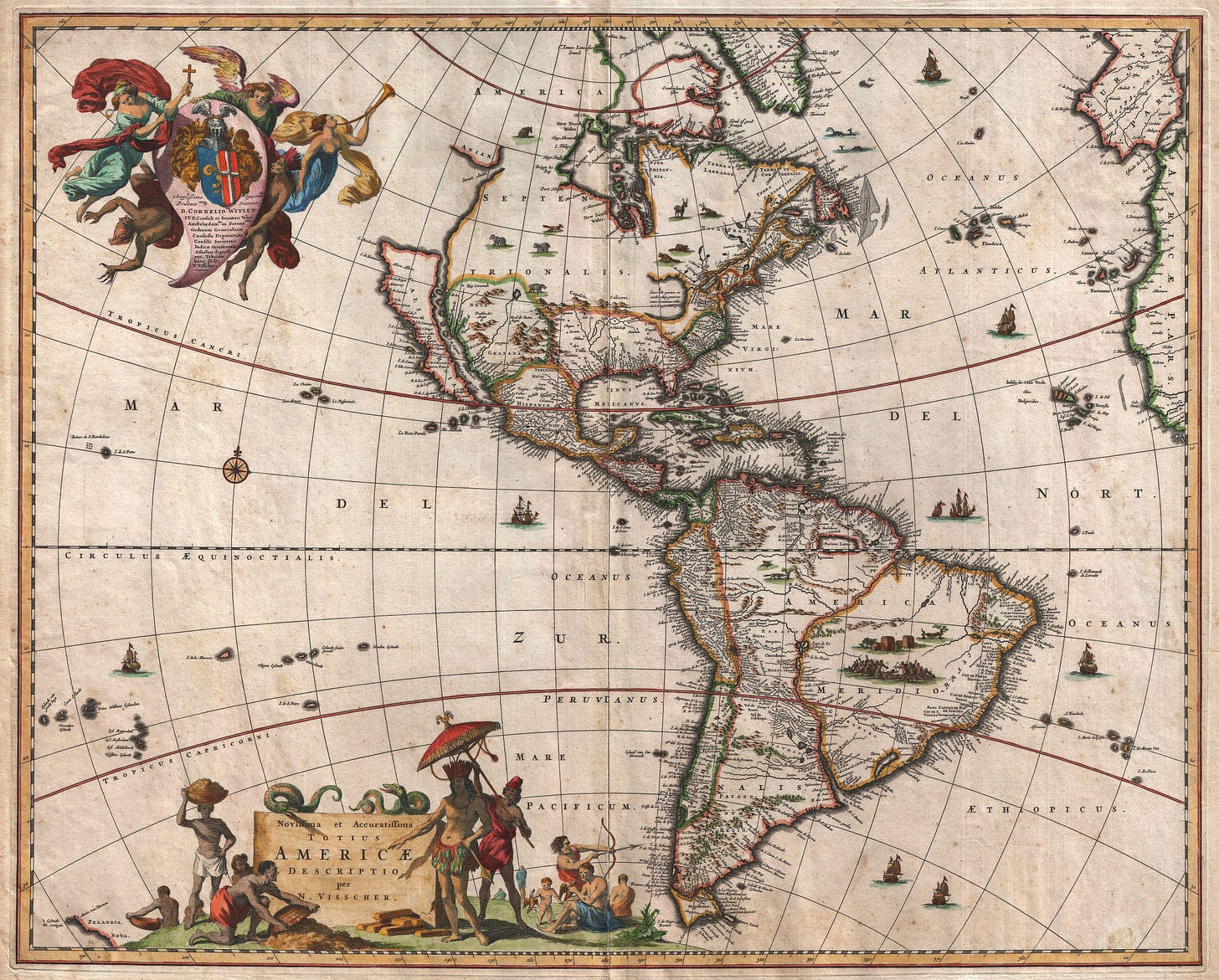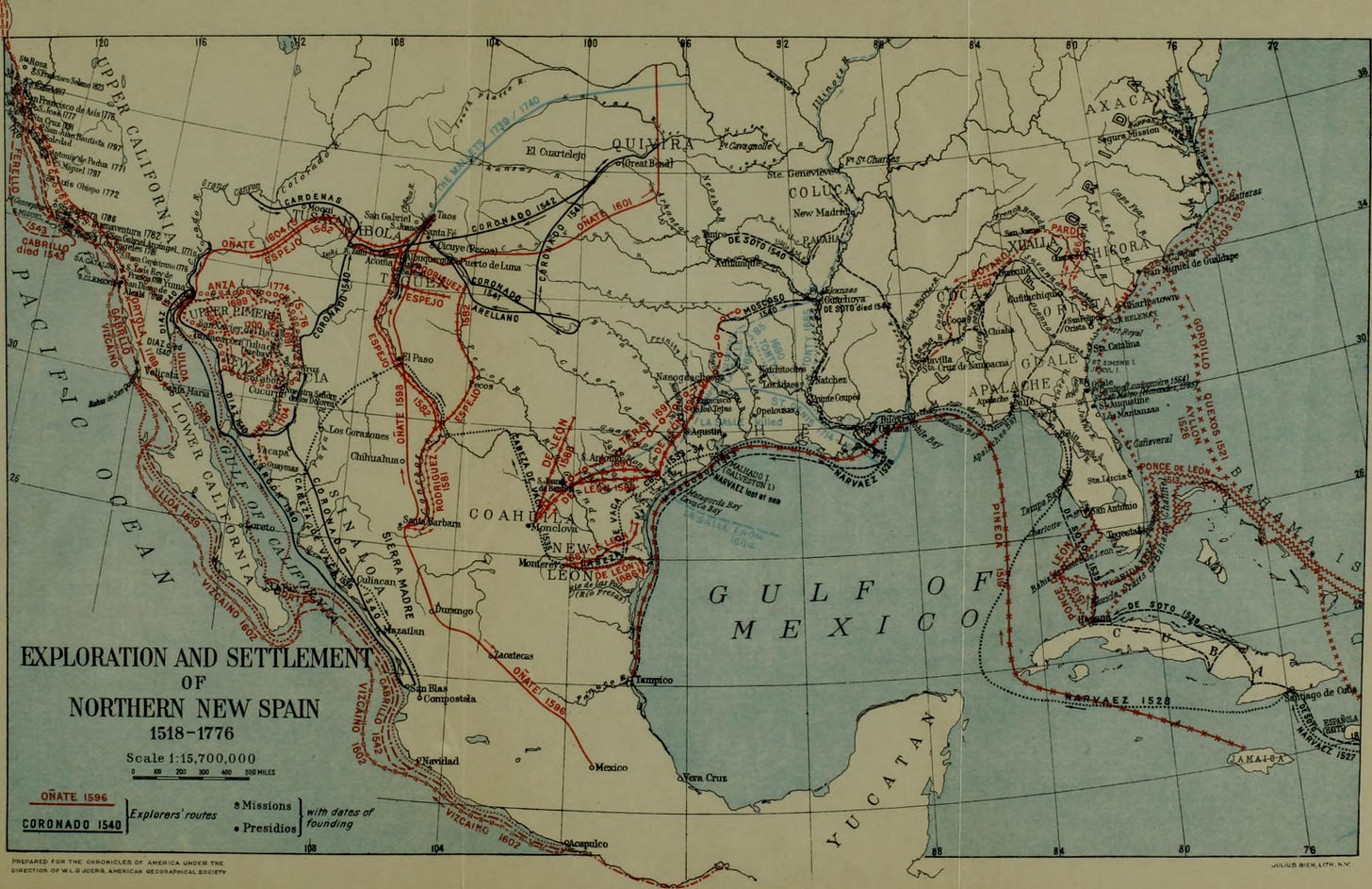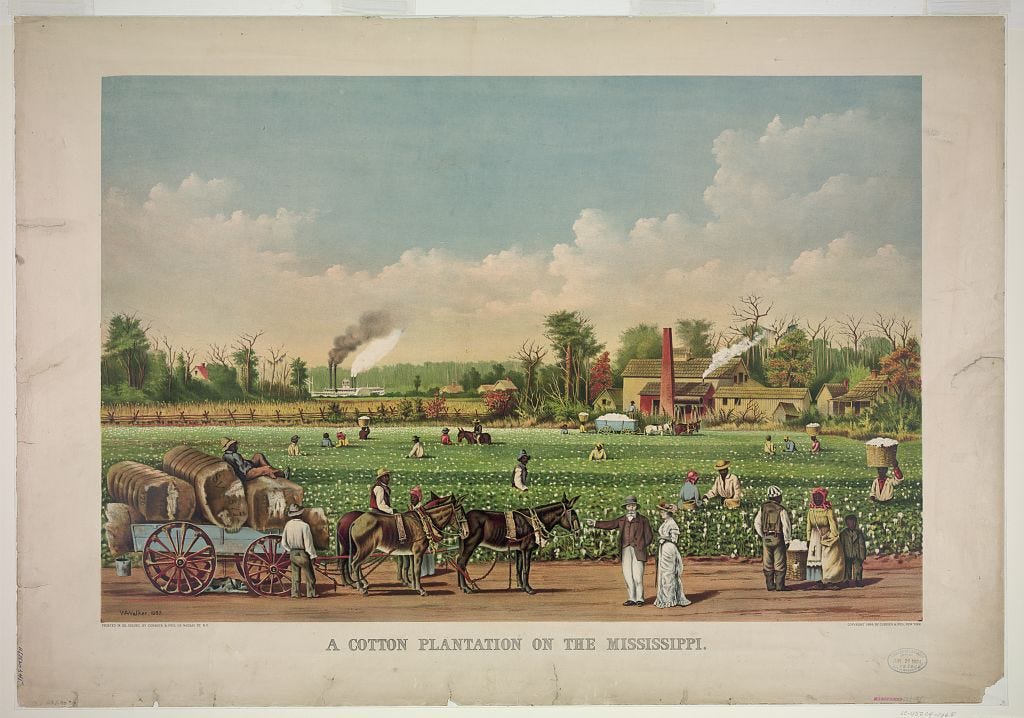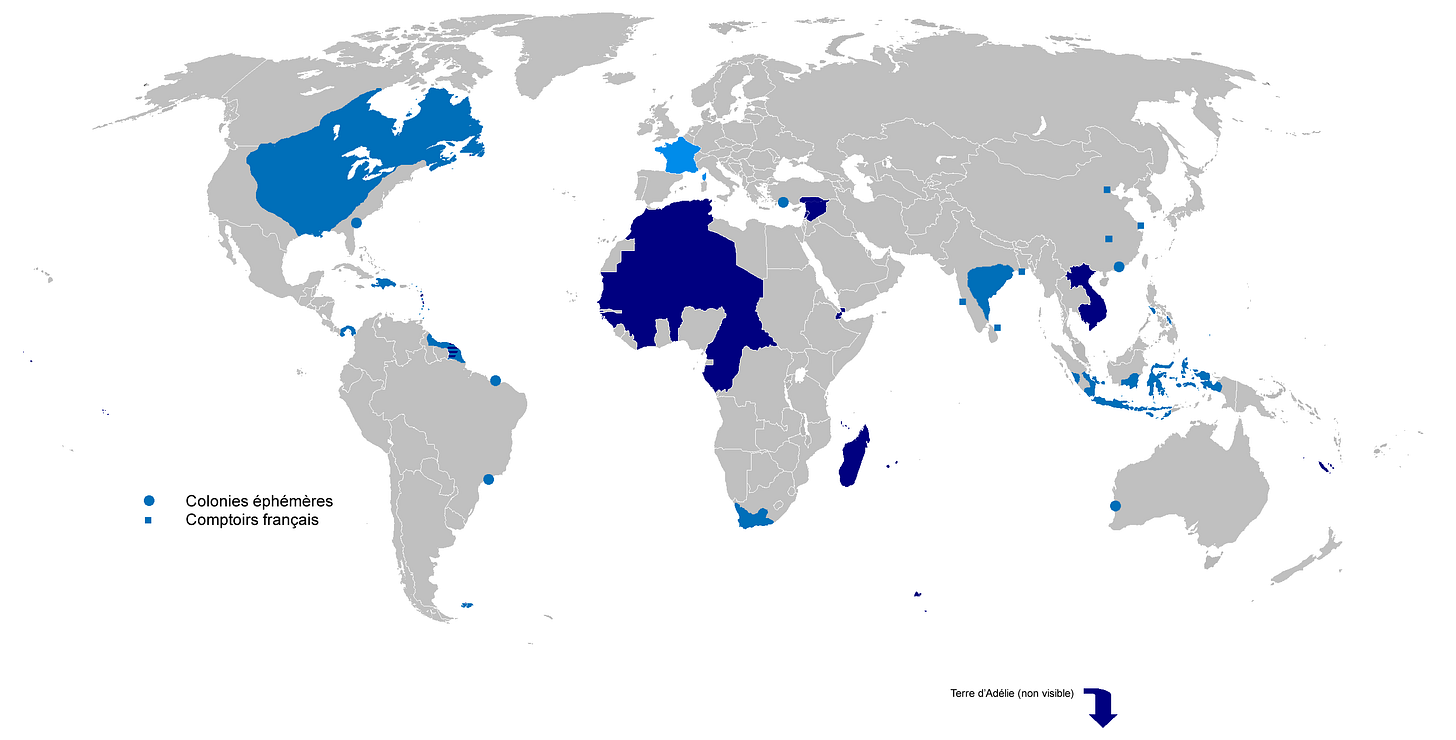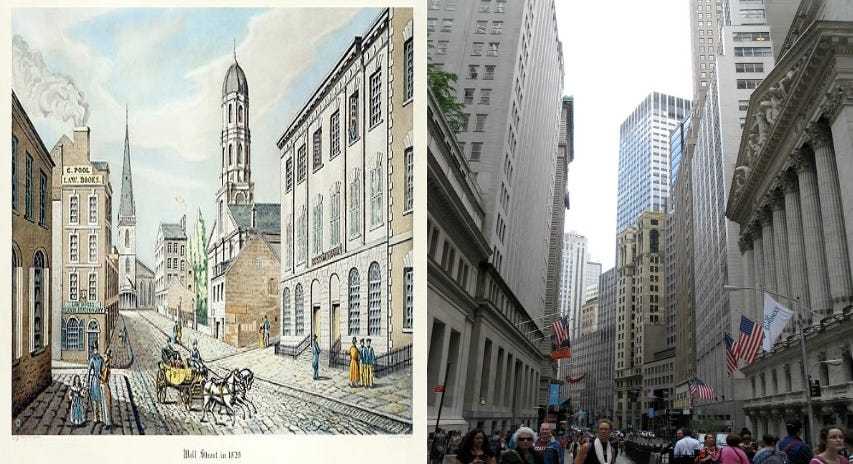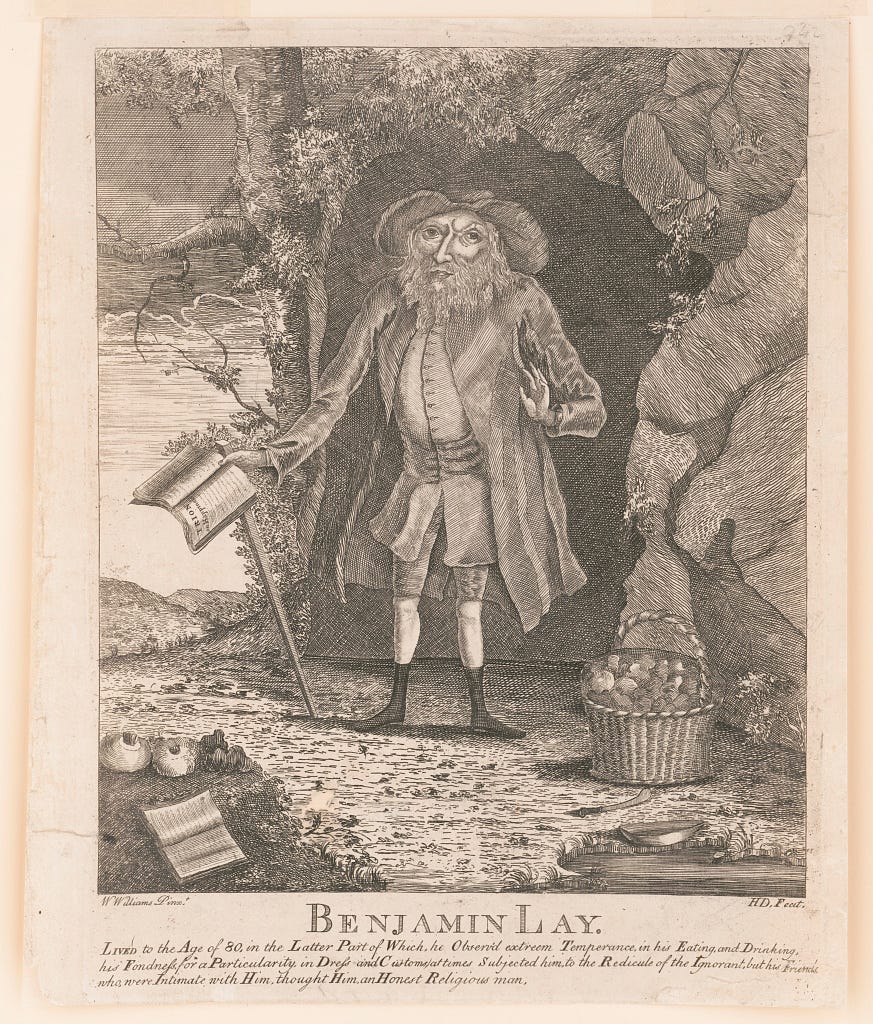Empire Games: European Colonial Empires of the New World
If money makes the world go around, the economy is the engine.
Introduction
Colonization refers to when a country conquers new lands and establishes colonies in foreign regions of the world. From these conquered lands, or territories, Empires extract natural resources that further enriched said empires. The natural resources that come from each region are determined by different geographical features of the regions conquered. From these different features come different economic activities and different manufactured goods which can be made from the raw materials. The structures and institutions around these resources can influence social and political factors within the region as well.
European Colonization is commonly referenced due to its direct impact on our modern global world. While some Norse colonies were established in North America much earlier, and there was a millenia of Empire Games predating Christopher Columbus; and an Age of Discovery, Exploration, and colonization followed. Many US states’ curriculum focus on Western European countries version of world domination, so 1492 a common starting point, when a Spanish expedition headed by the Italian explorer Christopher Columbus sailed west to find a new trade route to the Far East. He inadvertently landed in what became known as the West Indies, and he died believing he had truly voyaged to India.
Regardless, this Age of Contact brought the “Old World,” cultures from Africa, Asia, and Europe into contact with the “New World,” which includes North and South America. Europeans nations such as England, Spain, France, and others spent vast amounts of wealth, chartered private enterprises, and sponsored voyages and expeditions to extract profits from their investments. They were all motivated by the some combination of what is colloquially known as the 3 G’s: Glory, God, and Gold.
See also: Disney’s Pocahontas
Following the Dark Ages, wealthy European monarchs, merchants and companies sought riches, glory, and religious conquests. Europe at time was steeped in social, religious, and political upheaval (Enlightenment/Renaissance) from the closing of Silk Road trade routes and was forced to innovate. The system that emerged was based on forced enslavement of Africans, the removal of Native Americans from their indigenous lands, and, later on, exploited immigrants seeking a new life and/or opportunity. Many of which were refugees from the same feudalistic and religious conflicts that raged in Europe at the time. How the colonizing countries (refereed to as “Mother Countries”) achieved this would differ, but due to the feudal system in Europe and it’s remnants, the system of mercantilism was used to orchestrate the economy.
Continue reading below to explore the specifics of each “Mother Country” and their colonies:
Portugal
Portugal led the others into exploration. Encouraged by Prince Henry the Navigator, Portuguese seamen sailed southward along the African coast, seeking a water route to the East. They were also looking for a legendary king named Prester John who had supposedly built a Christian stronghold somewhere in northwestern Africa. During Henry’s lifetime the Portuguese learned much about the African coastal area. His school developed various new technologies such as the quadrant, the cross-staff and the compass, made advances in cartography, and designed and built highly maneuverable little ships known as caravels.
See also: how did early sailers and mathematics guide ships at sea

Spain
As the sponsor of Christopher Columbus's voyages, the Spanish Crown was the first European power to settle and colonize some of the largest areas, from North America and the Caribbean to the southern tip of South America. The Spanish called their American colonies "New Spain". Spain gained massive wealth from the silver mines in Central America, as well as establishing missions and presidios in what is now Northern Mexico and Southwestern United States.
After years of voyages of exploration, Spain began sending soldiers called conquistadors (kahn-KEES-tah-dors), across the Atlantic. Their goal was to conquer a vast empire for Spain and establish settlements. The conquistadors hoped to get rich along the way. Their intentions/motivations have been reduced to "God, Glory, and Gold" in popular culture. Explorers and conquistadors as well as missionaries and friars unknowingly carried diseases such as measles and smallpox, which infected Native Americans with no immunity and caused a decimation of the Native population. The Spanish were in direct competition with other Nations, however, and French efforts in Florida were challenged in places like Fort St. Louis by La Salle.
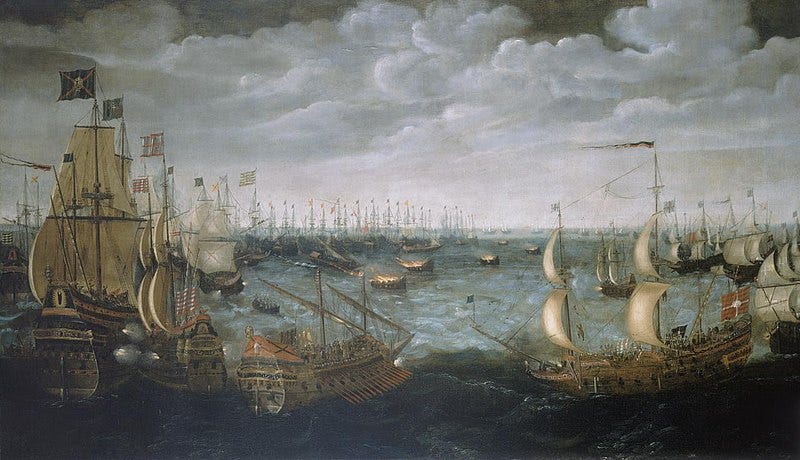
The Spaniards began building their empire of the Americas in the Caribbean, using islands such as Cuba, Puerto Rico, and Hispaniola - known as the West Indies - by establishing commercial plantations that cultivated mostly sugar, but also tobacco, cotton, cocoa, and ginger. Originally using forced indigenous labor, the loss of almost all of the population led to African Slaves being brought to the New World through the Transatlantic Slave Trade. Two expeditions led directly to Spain’s emergence as sixteenth-century Europe’s wealthiest and most powerful nation. The first expedition was headed by Hernán Cortés in 1519 against the Aztec Empire of Mexico.
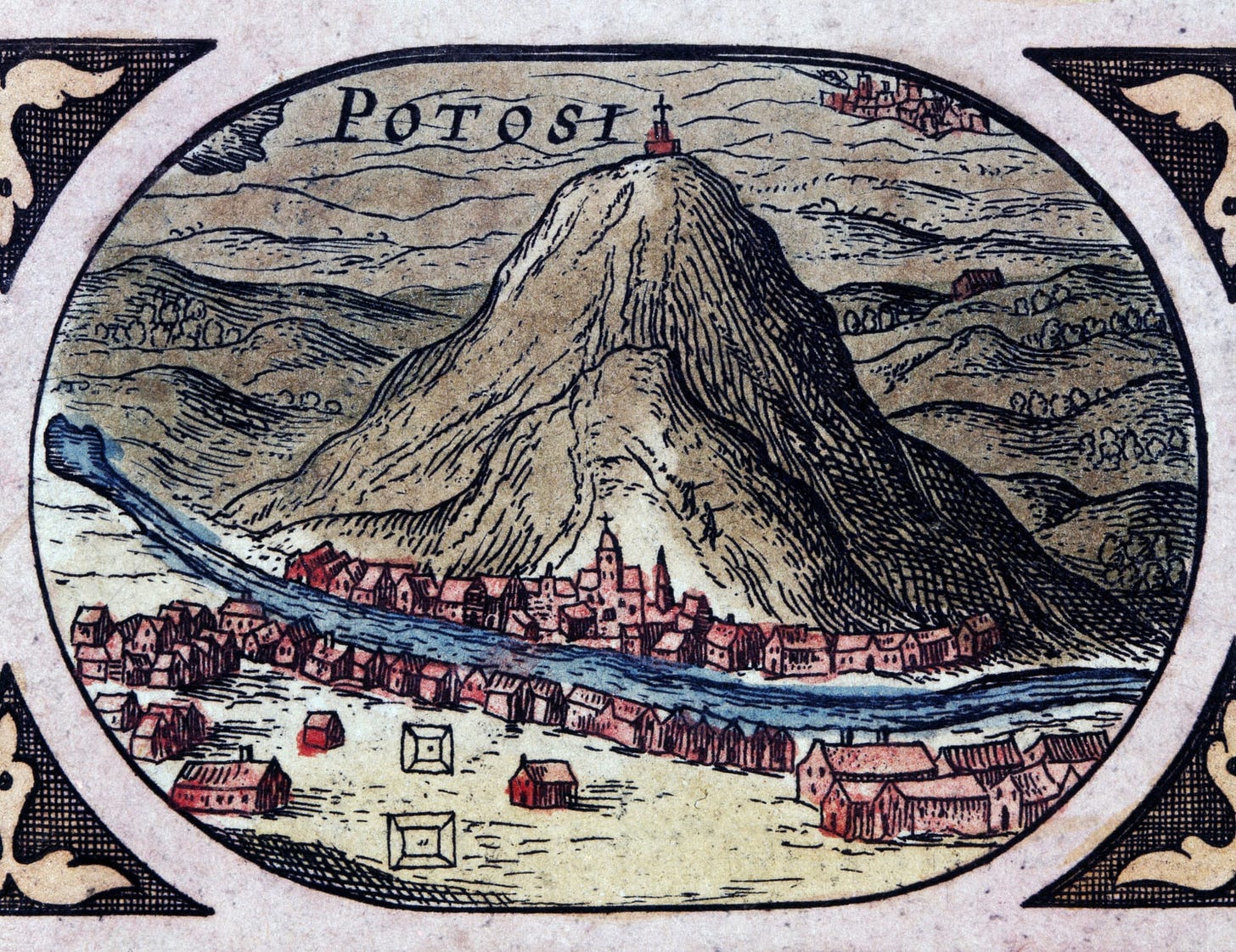
Completing the conquest in 1521, Cortés took control of the Aztecs’ fabulous gold and silver mines. Ten years later, an expedition under Francisco Pizarro overwhelmed the Inca Empire of Peru, securing the great Inca silver mines of Potosí for Spain. The North and South American mainland fell to the conquistadors, who, through disease and various wars, caused an estimated 8,000,000 deaths of indigenous people. Some authors have argued this to be one of the first large-scale acts of genocide.
In addition to the famous topplings of Native American civilizations of the Aztecs and Inca Empires, Spain fought in many wars with natives such as the Battle of Mabila during the De Soto Expedition, Coronado’s Tiguex War in Nuevo Mexico, and the Mixtón War; all in 1540. In 1550, the Chichimeca Wars started against the Chichimeca Confederation, a spillover from the Mixtón Rebellion. The Pueblo Revolt took place in 1680, marking one of the only Spanish defeats by Native Americans. Spain would also fight in the Navajo Wars, and the Comanche Wars in the 1700s.
See also: ‘Little Ice Age’
Great Britain, England, the United Kingdom
In 1497, under the charter of King Henry VII of England, Italian explorer John Cabot was financed for an expedition to the New World. Until Queen Elizabeth the First's (late 1500s) reign , the English showed little interest in exploration because they were still establishing control over the British Isles. By the mid-sixteenth century, however, England had recognized the advantages of trade with the East. In 1560 English merchants enlisted explorers to search for a Northwest Passage to India, they ended up exploring the North American Atlantic coast.
See also: Profits From Opium Shaped 19th-Century Boston

Thereafter, Queen Elizabeth granted charters to Sir Humphrey Gilbert and Sir Walter Raleigh to colonize America. Raleigh sent a company to explore territory he named Virginia after Elizabeth, the “Virgin Queen,” and in 1585, he sponsored a second voyage, this time to explore the Chesapeake Bay region. Early English explorers reported an abundance of fish and other natural resources.

The British early colonies of Roanoke and Jamestown struggled, and only survived because of help from Native Americans. The first slaves were brought to Jamestown in 1619. Once established, Jamestown and the Chesapeake Bay region exploded into highly profitable cotton, rice, and tobacco plantations that relied heavily on African slavery and the Transatlantic Trade.
See also: Whitney Plantation
The British’s other famous early colony, Plymouth, was established by Puritan Pilgrims in search of religious freedom. Their charter originally gave them permission to settle in Jamestown but were "blown off course" and instead settled in an area on the coastline of modern-day Massachusetts, near Boston, it became known as the Massachussetts Bay Colony. The New England Colonies, as they came to be known, profited more from fishing and shipbuilding, as opposed to the Southern British Colonies, which established a lucrative plantation economy. The English colonies also participated in the highly lucrative fur trade in competition with the French. Regardless of where their profit came from, the extraction of natural resources in the regions they colonized became the central tenant of their mercantile economy.
See also: Colonial Roots of American Taxation
By the seventeenth century, the English had taken the lead in colonizing North America, establishing settlements all along the Atlantic coast (13 Colonies) and the West Indies. Native Americans took a central role the survival of the early colonies, only to be forced out of their native lands. It is estimated that 90-95% of Natives - an estimated 20-50 million people - died of European diseases. The suviving tribal members would continue to war with the colonists, and eventually, the United States after their independence in 1783. Some early examples of these conflicts include the Anglo-Powhatan War, the Pequot War, and King Philip’s War.
France
In direct competition with England and Spain; France was building its New World empire in the Americas along the Hudson Bay, the Great Lakes and the Mississippi River watershed, where they specialized in the lucrative fur trade. Again, as will all European explorers, French fur traders were commissioned to locate a northwest passage around North America to India.
They explored the east coast as far North as Narragansett Bay and Newfoundland (Canada), the St. Lawrence River as far as present-day Montreal, Quebec and the area north to Nova Scotia, as well as south to Cape Cod, Port Royal, and the St. Johns River area in Florida. French efforts in Florida were soon pushed out in places like Fort St. Louis by La Salle. Thereafter, the French directed their efforts north and west of the Mississippi River watershed, attempting to establish various forts, leading them into direct conflict with Great Britain.
Unlike Spain’s empire, “New France” produced no caches of gold and silver. Instead, the French traded and warred (Beaver Wars) with inland tribes such as the Iroquois Confederacy over furs and fishing off the coast of Newfoundland. New France was sparsely populated by trappers and missionaries and dotted with military forts and trading posts. However, the French Empire failed to match the wealth of New Spain or the growth of the neighboring British colonies.
See also: Parisian Prisoners Were Offered Freedom if they Married Prostitutes and Move to Mississippi
Netherlands
The Netherlands, including Holland, are known collectively as the Dutch. The Dutch pioneered idea of limited liability and were also engaged in the exploration of America. Formerly a Protestant province of Spain, the Netherlands was determined to become a commercial power and saw exploration as a means to that end. In 1609, Henry Hudson led an expedition to America for the Dutch East India Company and laid claim to the area along the Hudson River as far as present-day Albany. In 1614 the newly formed New Netherland Company obtained a grant - or charter - from the Dutch government for the territory between New France and Virginia. About ten years later another trading company, the West India Company, settled groups of colonists on Manhattan Island and at Fort Orange, which would become New York when it was seized by the British.
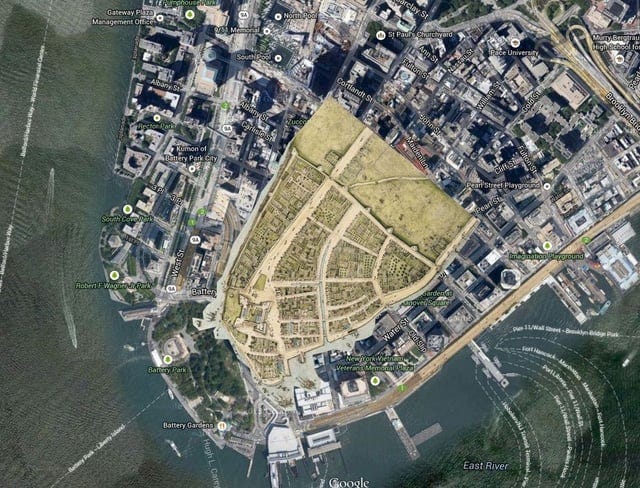
The Dutch also planted trading colonies in the West Indies, setting the roots for a worldwide trade empire that still exists today. Like all of the other European powers, the Dutch fought with Natives, notably in the Esopus War.
See also: The spice island traded to the Dutch for Manhattan
Conclusion
European Nations never found as much gold as they hoped, but the sugar and cotton plantations and/or fur trading settlements would give them enough wealth and power to change the world. European competition over colonized lands would lead to the first global conflict, called the Seven Years War (also called the French and Indian War, or Queen Anne’s War). Whether it was over competing religions or territorial claims in the New World, the Age of Exploration was the beginning of world trade as well as world war.
Although much attention is paid to the European Empires in history, the lasting effects on the world have been mostly negative. The development of the Atlantic slave trade forever changed the course of European settlement in the Americas. Other transatlantic travelers from the Columbian Exchange, including diseases, goods, plants, animals, and even ideas like the concept of private land ownership, further influenced life in America during the sixteenth and seventeenth centuries. The exchange of pelts for European manufactured goods including copper kettles, knives, and guns played a significant role in changing the material cultures of native peoples.
During the seventeenth century, native peoples grew increasingly dependent on European trade items while dying of their diseases. Either way, Natives were either enslaved or pushed off their land. There were countless treaties between Natives and Europeans, but eventually the effect would be the same. This is one of the great examples of the slow arch of history, and why it’s important to look at history through a global perspective and with a critical lense. Not to say there wasn’t criticism of colonization at the time. People such as Bartolome de las Casas and Benjamin Lay, as well as the onslaught of reformers that the 19th century (1800s) would begin to tilt the arch of history back towards justice, a fight still going on today.
